Found this in 'Henley's Twentieth Century Formulas, Recipes and Processes (1926):
CLEANING SKINS AND LEATHER:
To Clean Colored Leather. — Pour carbon bisulphide on non-vulcanized gutta-percha, and allow it to stand about 24 hours. After shaking actively add more gutta-percha gradually until the solution becomes of gelatinous consistency.
This mixture is applied in suitable quantity to oil-stained, colored leather and allowed to dry two or three hours. The subsequent operation consists merely in removing the coat of gutta-percha from the surface of the leather—that is, rubbing it with the fingers, and rolling it off the surface.
The color is not injured in the least by the sulphuret of carbon; only those leathers on which a dressing containing starch has been used look a little lighter in color, but the better class of leathers are not so dressed. The dry gutta-percha can be redissolved in sulphuret of carbon and used over again.
You can read more about gutta-percha at http://collections.ic.gc.ca/cable/gutta.htm
Wednesday, September 14, 2005
A Glue from my Archive
Found this in 'Henley's Twentieth Century Formulas, Recipes and Processes (1926):
Glue for Leather or Cardboard.—To attach leather to cardboard dissolve good glue (softened by swelling in water) with a little turpentine and enough water in an ordinary glue pot, and then having made a thick paste with starch in the proportin of 2 parts by weight, of starch powder for every 1 part, by weight, of dry glue, mix the compounds and allow the mixture to become cold before application to the cardboard.
Glue for Leather or Cardboard.—To attach leather to cardboard dissolve good glue (softened by swelling in water) with a little turpentine and enough water in an ordinary glue pot, and then having made a thick paste with starch in the proportin of 2 parts by weight, of starch powder for every 1 part, by weight, of dry glue, mix the compounds and allow the mixture to become cold before application to the cardboard.
Friday, September 09, 2005
A Very Unique Coin Purse
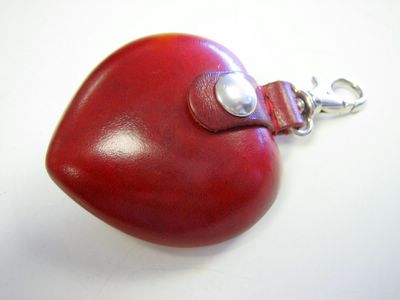
The Front of the coin purse.
This very special hard leather coin purse was shown to me by someone who had bought it in Germany. It is a Paulette Rollo Coin Purse
Its construction was a point of interest. It was made of two shaped halves of leather that was glued together, but there is no visible glue to be seen. The outside is so perfect, that we gathered it was molded inside a mold, maybe while it was filled with a hard wax, which could have been melted out of the inside.
However it was made, it is perfect - when it is closed, it is a very smooth hard nicely shaped heart.
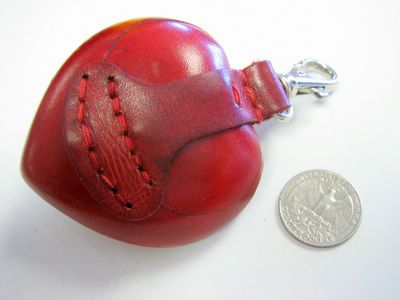
The back of the purse - the quarter is there to show size. the feint line you see on this side is the seam where the purse opens. The sewn on strap acts as the hinge.
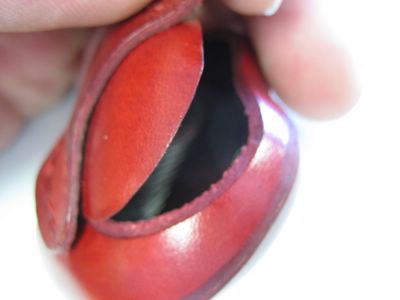
Here you see the 'lid' open - it is a perfect fit, obviously cut after the purse was shaped.
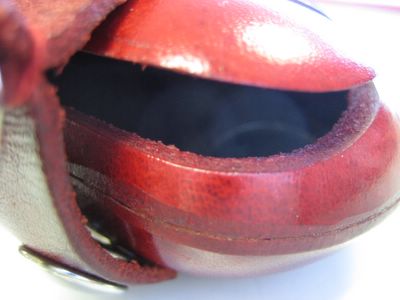
Here you can see the remarkable part of this unique piece - the seam where the top and bottom halves were joined - there is no sign of glue at all - the only thing you can see is clear on this photo: the seam was trimmed after it was glued.
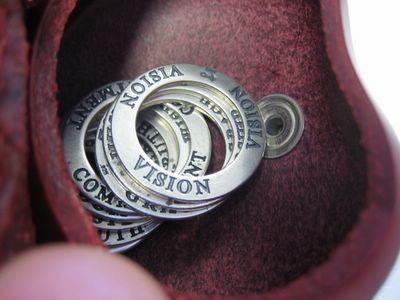
See the very smooth inside of the purse - almost waxy. It made me think that it was probably formed around hard wax, which would then have been melted out. There is NO sign of any glue to be seen on the inside of the seam.
Subscribe to:
Posts (Atom)